The Best Electric Basses for the Recording Studio
It’s hard to make a great pop song without a great bass line, and it’s hard to do a great bass line justice without a great bass sound. The bass often serves as the soul and the spine of a record, and if it’s not right, nothing is.
Although the vast majority of tone lies in the fingers, each of the major types of electric bass offers its own subtle color. Today we’ll be looking at a few of the most widely recorded electric basses in history, any of which can help serve as a solid foundation for any studio collection.
The Fender Precision Bass
Introduced in 1951, the Fender P-Bass is probably one of the most iconic instruments of all time, nearly synonymous with the term “electric bass.”
It truly became the instrument it is today in 1957, when the P-bass was updated with split pickup, comprised of two separate magnets, wired in series. This new “humbucking” configuration cut down dramatically on noise, and even more crucially, gave the Fender Precision Bass its signature high-octane tone.
The sound of the Fender P is fat, heavy like a brick, muscular and slightly aggressive, with an unmistakable midrange growl.
It’s a bass that has been favored by hard rock players for decades, from Geezer Butler of Black Sabbath to Paul Simonon of The Clash, to countless thousands since. But it’s also an instrument that has deep ties to the roots of funk, soul and R&B.
The Precision was the bass of choice for influential session players from Donald “Duck” Dunn, to Motown‘s James Jamerson (who played his with his fingers, direct into the board, using a set of flatwound strings that he reportedly never changed) and the legendary Carol Kaye (who also played hers with a set of flatwounds, but with a stiff, heavy pick, often through a Fender “Super Reverb” guitar amplifier.)
The Fender Jazz Bass
The Fender Jazz Bass offers a subtle shift away from the powerfully “forward” sound of the Fender Precision.
With two single-coil pickups wired in parallel, it offers a tone that is somewhat more laid-back and refined. It’s a sound that’s more open and clear, articulate and smooth.
The Fender Jazz can also offer a bit more sonic variety than the Precision.
With both pickups’ volume knobs at full throttle, you have the classic, well-balanced tone of the Fender Jazz. Blend a bit more toward the neck pickup, and it becomes darker and more muted.
Start rolling back the tone control in this position and you could almost fake a sound that’s halfway to flatwounds. Meanwhile, blend toward the back pickup and pluck by your bridge, and you can get a tone that’s almost razor-blade thin.
For many decades, there was an inevitable tradeoff here: If you turned down one of the two pickups, the hum-canceling effects of the parallel wiring would disappear, causing these alternate tones to be far noisier than anything offered by a P-Bass. Modern advancements however, like active electronics or passive “stacked” hum-canceling pickups have essentially made this a non-issue.
The Fender Jazz is associated with a long line of players form John Paul Jones of Led Zeppelin, to Jaco Pastorious, to Larry Graham of Sly and The Family Stone, to Bootsy Collins, who played with James Brown and Parliament-Funkadelic (and who would eventually have 5 Fender Jazz-style pickups installed in his own unforgettable star-shaped “Space Bass”.)
For even more flexibility, contemporary Fender Jazz Basses often come pre-installed with a push-button switch that allowing you to switch from parallel mode to series mode, in order to get a somewhat more muscular tone.
There are still more modifications available for studio owners who just can’t decide: A “P/J” configuration has become increasing popular in recent years. These instruments will generally have a P Bass pickup in the middle and a J Bass pickup near the bridge for extra variety. And, since the neck of the Fender Jazz is usually just a touch smaller than the Precision’s (often making it a bit easier to handle for players who are migrating from guitar) many of these hybrid basses will also feature a custom “J-style” neck.
Today, countless additional companies make their own iterations of these types of basses, with high-quality models available from makers like Sandberg, Lakland, and G&L.
The Music Man Stingray (and Sterling)
When, in 1971, Leo Fender left the company he founded, he didn’t go into retirement. He just started a new company and kept on pushing the envelope.
His Music Man Stingray was an incredibly forward-looking bass when it was designed. And, much like his Precision Bass two decades before, it helped launch whole new styles of music.
The classic Stingray, with its oversized pickup featuring twin coils wired in series, and onboard electronics that allow active boost/cut control over bass, middle and treble, is a bass which projects a sound that is both powerful and sensitive.
The responsiveness of the Stingray was a key component in some players’ tone and their development of a trademark slap-bass style. Devoted players have included Bernard Edwards of Chic, Flea of the Red Hot Chili Peppers, and Louis Johnson, who is perhaps best known for his work on Michael Jackson‘s Thriller.
Of course, it’s not just funk and slap players who the Stingray speaks to. It’s also been a favorite for many rock and metal bassists at one point or another, including Cliff Williams of AC/DC, Rex Brown of Pantera and Joe Lally of Fugazi.
For an alternative to the Stingray, one of my personal favorites has always been the Music Man Sterling.
In addition to being a lighter and sleeker instrument thanks to a scaled-down body and more slender neck, the Sterling offers a bit more tonal variety as well.
It can be just as sensitive, powerful and responsive as the Stingray, but often with a bit less punch and growl. A multi-position switch allows for coil tapping and switching between series and parallel configuration. In general, it comes across as a slightly more sophisticated instrument capable of more elegant sounds. That may be what you want, and it may not be.
It has often been said that if the Stingray is a like Music Man’s answer to the P Bass, the Sterling is like its version of the Fender J.
The Hofner 500/2 Club Bass and 500/1 Violin Bass
There’s perhaps no studio bass more likely to start a conversation than a Hofner.
These instruments, most often associated with Paul McCartney in his mop-top days, have a sound all their own: A thick, plunky, stubby staccato with a complex and short-lived sustain.
Consider matching these semi-hollow basses with flatwound or half-round strings for a smooth, muted and unforgettable tone.
For a touch of this flavor with a less specific sound and look, also consider Guild’s classic semi-hollow bass, the Starfire.
The Gibson EB-3 and EB-0
Instruments in the Gibson EB series are often referred to as “SG basses” for their similarity in looks and design to the SG line of guitars.
These basses are unique in this collection: They are made from a solid cut of mahogany with a set-in neck, giving them tremendous, buttery sustain and an exceptionally dark, full and smooth sound.
The smaller 30.5” scale of the EB-0’s neck, along with its compact body, also makes it an especially comfortable instruments for moonlighting guitar players.
4 knobs and a multi-position tone switch on the classic EB-3 offer some interesting flexibility in sound, ranging from a clunky and insistent attack at the bridge, to creamy richness at the neck, to absurdly bass-heavy mud if you want it.
As an alternative to the dark-sounding shorter scale Gibson EB series, you might consider a Fender Mustang Bass, which also offers a compact profile, but with a somewhat more conventional tone.
Choosing The Right Bass(es) for Your Studio
These are some of the most classic electric basses in history. Since they’ve been developed, others have come along, but none have made them irrelevant.
There is definitely something to be said for decidedly more forward-looking active basses like those by Fodera, Steinberg, Chapman, Carl Thompson, or basses in the Ibanez SR and BTB series. There are also interesting and very useful hybrids of the classics, including the basses made by Reverend. And, despite their unusual and sometimes troublesome tone, some of us will love the look of a Rickenbacker or a Guild solidbody so much that we will lust after them.
But if a studio had to have just one bass instrument to lay anchor with, I’d suggest picking up a single truly great Precision Bass, Jazz Bass or P/J hybrid to have around.
Active electronics can be nice, but for a main studio instrument, I’d personally go with classic passive circuitry, possibly with stacked hum-canceling pickups and a coil-tapping switch.
Once you’ve established this foundation, anything is possible. From here, all you have to do is figure out what sounds appeal to you and your clients:
Want something a bit more modern, articulate and electrifying? Consider a Stingray, a Sterling, or perhaps a higher-end Ibanez. Want something with a decidedly more “vintage” tone? Go for a Hofner, a Gibson/Epiphone EB, or maybe a Guild Starfire. Want something really unique, interesting and cost-effective? Consider Reverend. Or dozens of others.
No matter which way you go, any studio deserves to have at least one truly great bass guitar. It’s time to lay anchor, if you haven’t already.
Please note: When you buy products through links on this page, we may earn an affiliate commission.







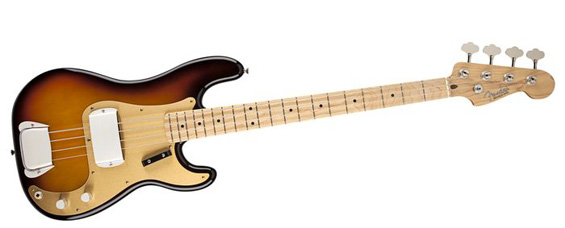

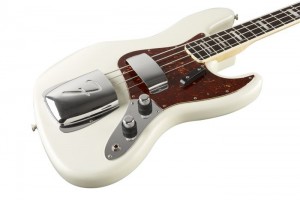

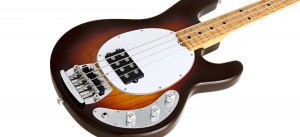
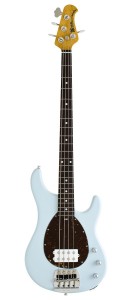

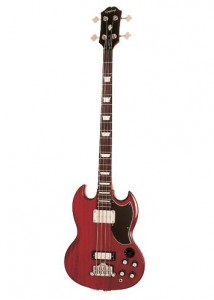
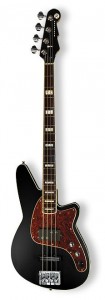
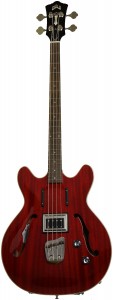
Zalmo
January 9, 2014 at 3:28 pm (11 years ago)I was once recording in the RIP Ultrasonic Studios on Long Island,in Hempsted, and the engineer (I believe John Bradly) came over to see what bass I was using…and it was the low-line Fender MusiciMaster…He was impressed…He said it sounded great for recording….
Sometimes simpler is just better.
As straight away a bass as could be.
SlopeRocker
January 9, 2014 at 5:08 pm (11 years ago)Don’t forget the Fender Bass VI. 30″ scale. Tuned E>e one octave below standard. Also, there are good VIs by Schecter. Very versatile. Usually played with a pick. Sounds great with effects and proper EQing.
SlopeRocker
January 9, 2014 at 5:10 pm (11 years ago)Forgot to add, it has 6 strings. String gauges usually .095>.025 but can vary. Uses flats or rounds.
Evan
January 11, 2014 at 3:16 pm (11 years ago)Just to clarify, the EB-3 is the standard 34″ scale length, whereas the EB-0 is 30.5″ as mentioned. I love short scale basses much more than the average guy, but I have to agree with criticisms hat they don’t have the same tone, sustain, and mass as regular scale length. Might be noticeable in studio situations. Medium scale at 32″ is a pretty nice compromise.
bzb
January 11, 2014 at 3:28 pm (11 years ago)Not a bassist, but wondering – how do the squire J & P basses stack up against their bigger and finer relatives?
Jerry Rogars
January 17, 2014 at 3:52 am (11 years ago)@Jerry In Recording Studio top electronic basses are most essential thing. Most of Professional Recording Studio prefer these kind of basses to record amazing audio music album.
Jake
January 30, 2014 at 11:02 pm (11 years ago)I’m not sure if everybody would consider the Harmony H22 a studio classic, but that thing thumps like nothing else I’ve played/heard.
Dscratch
September 16, 2014 at 11:52 pm (11 years ago)how does the steinbergers sound on a recording ?